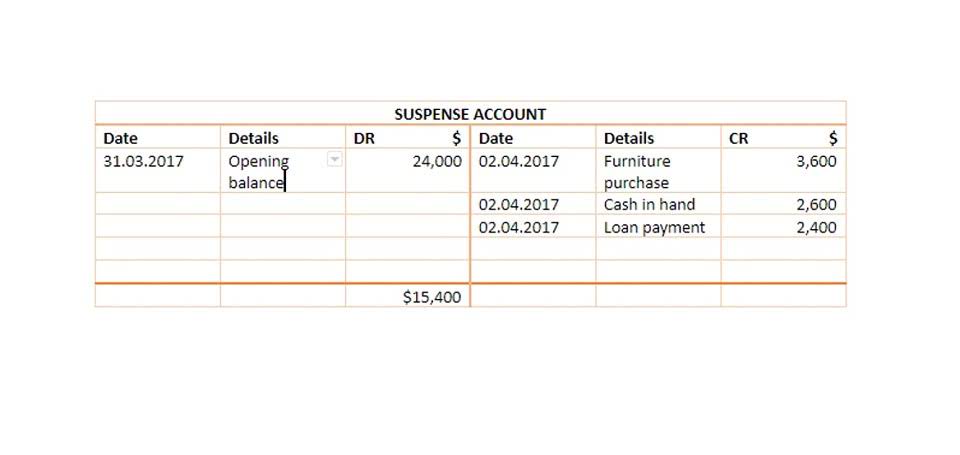
Primary expenses are incurred during the process of earning revenue from the primary activity of the business. Expenses include the cost of goods sold (COGS), selling, general and administrative expenses (SG&A), depreciation or amortization, and research and development (R&D). Below https://www.bookstime.com/ is a portion of ExxonMobil Corporation’s (XOM) balance sheet for fiscal year 2021, reported as of Dec. 31, 2021. To calculate the change in net assets, you subtract net revenue from net expenses. To help you grasp the concept, let’s consider a hypothetical nonprofit organization.
If your nonprofit provides and charges people fees for their services, you can also report this revenue on your Statement of Activities. Nonprofits can use this report to file Form 990 with the IRS and provide donors with transparency and trust in the organization. If the net income is positive, that means the organization is making more money than it’s spending. It means the organization is doing well and is able to continue its operations. But also, things like programmatic expenses, or the cost of holding events should be included. These payments may have been made with cash, credit, or even through in-kind donations.
Nonprofit Statement of Activities: All You Should Know (+FAQs)
But, since auditable nonprofit financial statements, we’ll talk about accrual accounting practices in this article. That means your revenue will also include any donations pledged in the period (whether you collected the cash or not) and any receivables (for services rendered but not yet paid). The statement of activities is one of the main financial statements issued by a nonprofit organization. It is prepared instead of the income statement issued by a for-profit business. Nonprofits use the statement of activities to review changes to their net assets and show revenue and expenses over the accounting year. You can check with GAAP and IFRS practices to ensure you’re correctly categorizing net assets.

The P&L covers all the organization’s programmatic, fundraising, and administrative expenses incurred during the period. The statement also reports all the revenue generated during the period, regardless of the source. In conclusion, understanding the intricacies of nonprofit Statements of Activities is essential for any nonprofit leader or stakeholder. These statements offer valuable insights into an organization’s financial health, mission commitment, and accountability. Whether you’re running a nonprofit or considering supporting one, familiarity with Statements of Activities is a key step in ensuring transparency and responsible financial management. This report identifies funds received without donor restrictions and funds with donor restrictions.
Join the fundraising movement!
Columns are included to report data for each class of net assets – without donor restrictions, with donor restrictions, and total. This report is important for nonprofit organizations because it helps them assess their performance and identify areas where they need to improve. The three main types of financial statements are the balance sheet, the income statement, and the cash flow statement.
- Financial statements are often audited by government agencies and accountants to ensure accuracy and for tax, financing, or investing purposes.
- WASHINGTON — Today, in coordination with the Republic of Korea (ROK), the U.S.
- The ROK is jointly designating six of the same individuals and entities for their involvement in illicit financing and revenue generation through overseas DPRK information technology (IT) workers.
- If you’re looking to understand how your nonprofit is spending its money, the statement of activities is a valuable resource.
- Primary expenses are incurred during the process of earning revenue from the primary activity of the business.
Supporting expenses encompass administrative and general costs necessary to keep your nonprofit running smoothly. Examples include rent, utilities, office supplies, salaries of non-program staff, and professional fees. The Statement of Activities shows where your income comes from and how you spend that income.
Government Shared Services
As we mentioned earlier, many nonprofits use these financial statements in their annual reports to show transparency and build trust in their organization. At times, supporters will give donations statement of financial activities stipulating that they can only be used on a specific project or program. The net assets on your statement of financial position are where your organization must list these restrictions.
Operating revenues include anticipated earnings related to Cornell’s mission of “learning, discovery, and engagement” along with services that support students and campus operations. Wellington Zoo also shares further details for each financial statement to explain who is reporting these facts and how they comply with accepted standards. Finally, financing revenue comes from the earnings and interest earned on your financial activities and savings. Nonprofits must file four statements every year to comply with IRS rules. The information provided in this blog post is for general informational purposes only and is not intended to be, nor should it be construed as, legal, financial, or tax advice. Tax laws and regulations are complex and subject to change; you should consult with a professional tax advisor, financial planner, or attorney for advice specific to your individual circumstances.
What is a nonprofit financial statement?
The author and Simplicity Financial disclaim any liability for any errors or omissions in the information provided or for any actions taken in reliance on this information. Determine the change in net assets resulting from the revenues and expenses reported. Understanding your finances and resources is extremely important to a nonprofit, because it provides insight as to whether or not you have the required resources to fulfill your mission. Today we are going to examine and learn how to understand your Statement of Activities, or Statement of Income and Expenses.
- This allows you to track and assess the financial performance of each initiative separately.
- A purchase or sale of an asset, loans made to vendors or received from customers, or any payments related to a merger or acquisition are included in this category.
- With each of these, nonprofits include salaries, events, administrative costs, etc.
- But a nonprofit calls the difference between revenue and expenses change in net assets.
- The Statement of Activities (SOA) is the correct nonprofit term for the report we may commonly have called the income statement, budget report, profit & loss, income and expense report, etc.
- By sharing what funds they collect and how they’re spent, donors can see how their gifts support the nonprofit’s programs and beneficiaries.
- The revenue section contains a breakdown of the major sources of revenue, such as contributions, program fees, membership dues, grants, investment income, and amounts released from donor restrictions.